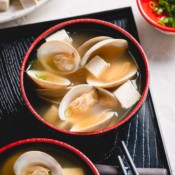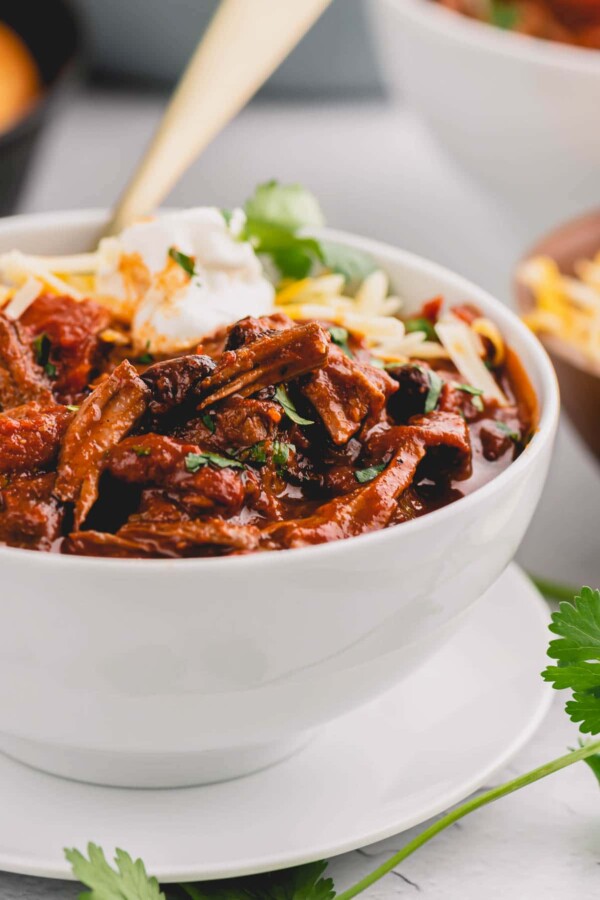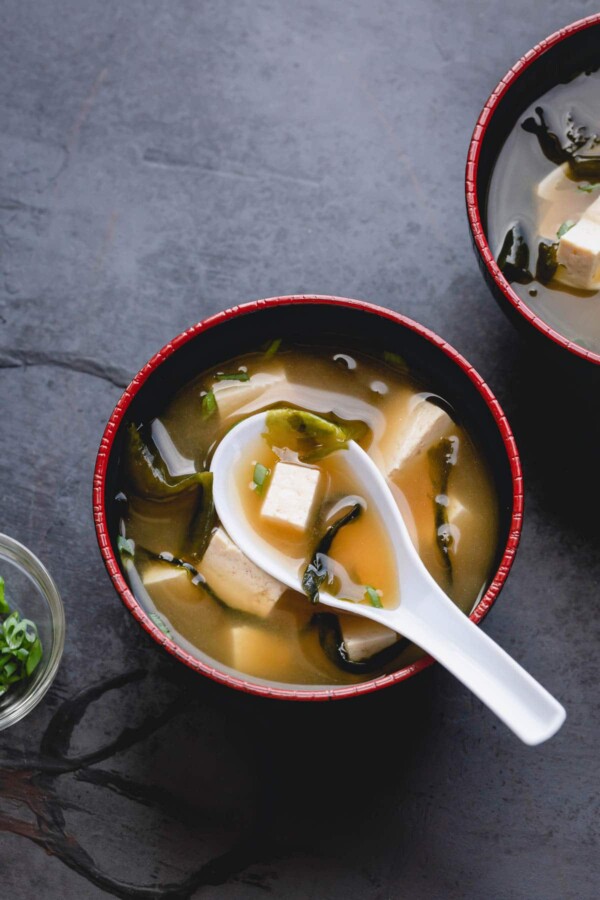Jazz up your next homemade miso soup with clams for extra umami flavor and protein! And it’s just as easy as regular miso soup.
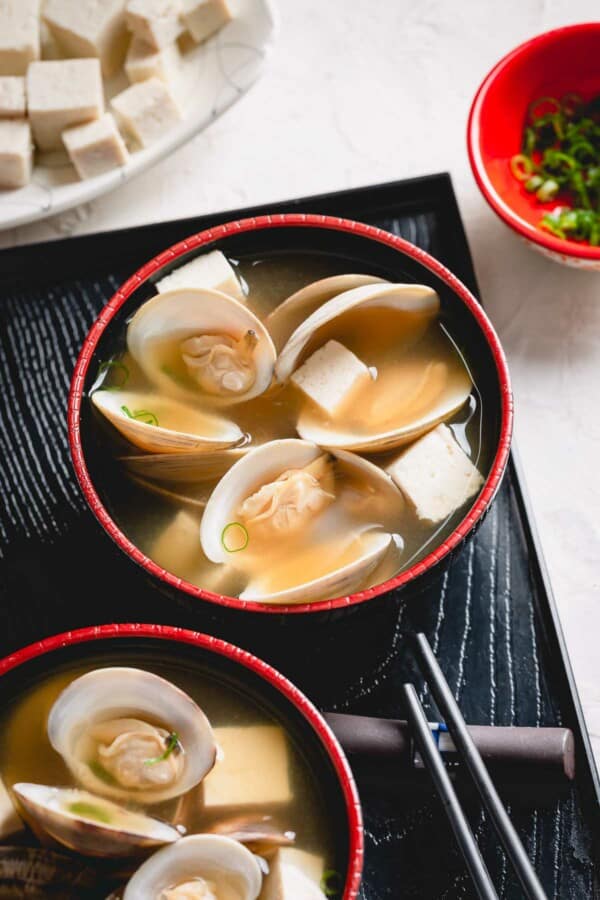
Table of Contents
Why you’ll love this soup:
When making clam miso soup, you don’t need to use dashi, because clams add rich umami flavor to the stock.
Key ingredients:

- Clams – Traditional Japanese clam miso soup calls for asari, or Manila clams. These are hard-shell steamer clams that have tender sweet meat. You can also use littleneck clams instead of Manila clams.
- Miso paste – Both red or white miso paste works perfectly. You can learn more about the difference between these varieties in my easy miso soup recipe.
- Optional add-in – In order to not overwhelm the delicate flavor of clams, I recommend keeping the add-ins to a minimum. My go-to’s are tofu and scallions.
Tip
Pacific littleneck clams are not the same as Eastern littleneck clams. In fact, they’re completely difference species.
Keep in mind, Pacific littleneck clams take 3 times longer to cook than Manila or Eastern littleneck clams.

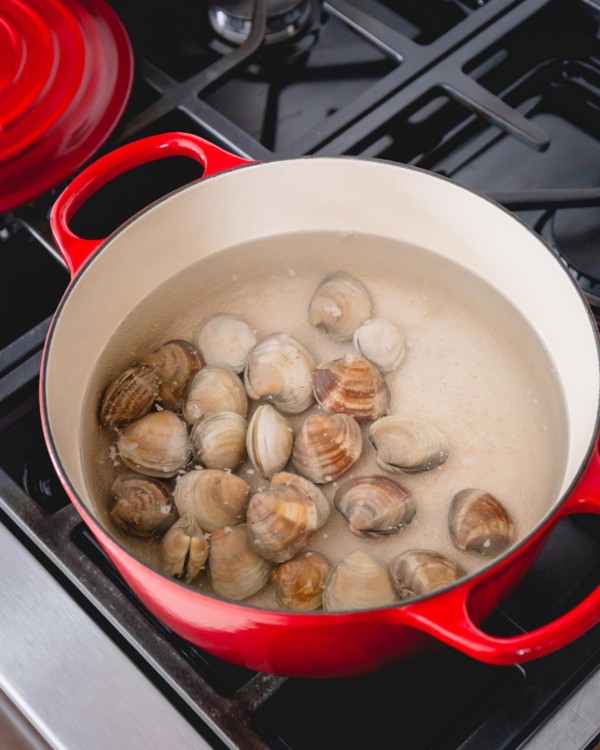
How to make asari miso soup:
- First, it’s important to purge your clams to remove as much sand as possible. Here’s a great tutorial on how to clean clams.
- Bring a pot of water with clams to a boil.
- After a minute or so, clams will start opening. Immediately reduce the heat to low heat.
- Take a cup of hot water into a separate cup and dissolve miso soup in it.
- Then pour in miso paste mixture back into the clam stock.
- Add tofu and scallions. Gently simmer for a minute or so and serve.
Tip
Don’t boil the soup after adding miso paste. Not only the clam meat will overcook and turn rubbery, but you’ll also lose aromatic and nutritional values of miso.
Storing Tip:
It’s best to consume clam miso soup immediately.
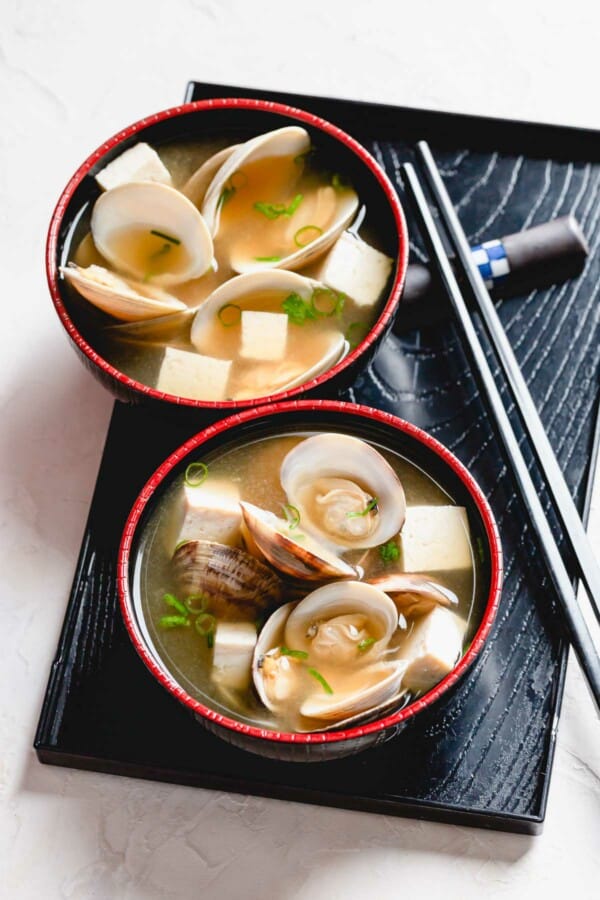
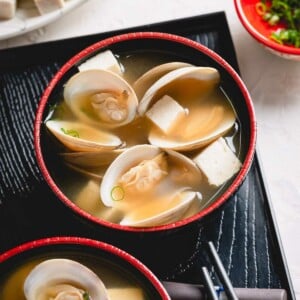
Clam Miso Soup
Ingredients
- 1 lb Manila or littleneck clams Note 1
- 1/4 cup sea salt
- 2-3 tablespoons red or white miso paste or a combination of two Note 2
- 4 oz silken tofu cubed, optional
- 2 green onions green portion only, thinly sliced, optional
Instructions
To prepare clams:
- Scrub the clams under running cold water and rinse them with cold water a few times until water run clear.
- In a large bowl, combine 4 cups of cold water and salt. Stir until salt is dissolved. Add the washed clams and soak the clams in the refrigerator for minimum of 20 minutes or up to 2 hours. Soaking in salt water, helps to draw out the sand.
To cook clams:
- Add 5 cups of cold water in a large saucepan. Add clams and bring it to a boil over high heat. Skim off the foam on top with a spoon.
- A minute or so after the water boils, the clams should open, which means they’re cooked. (TIP: It’s very important to keep an eye on clams. It takes just about a minute to cook the clams once the water comes to a boil. If cooked for longer than a minute, they will turn tough and rubbery!)
To make miso soup:
- Immediately reduce the heat to low and transfer about 1 cup of stock to a cup and stir in miso paste. Stir until miso paste is fully dissolved.
- Pour the miso mixture back into the stock.
- Add tofu and green onion, if using. Simmer gently for 2 minutes and serve. (TIP: Don’t bring the soup to a boil after adding miso paste!)
